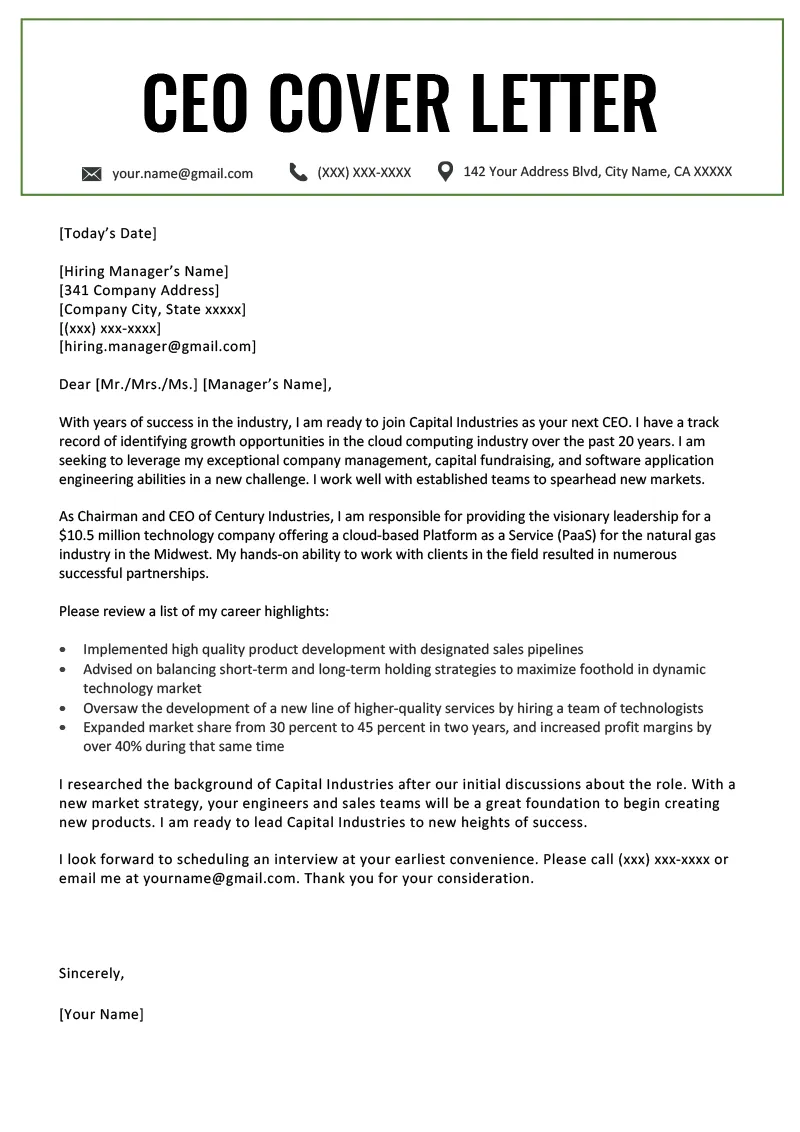What is an Executive Cover Letter
An executive cover letter is a critical document in the job application process, especially for high-level positions. It’s your opportunity to go beyond the bullet points of your resume and showcase your unique value proposition, leadership qualities, and relevant experiences. Unlike a standard cover letter, an executive cover letter is tailored to emphasize strategic accomplishments, demonstrate industry knowledge, and convey a clear understanding of the organization’s needs. It serves as a powerful tool to make a strong first impression and secure an interview. Crafting a compelling executive cover letter requires careful attention to detail and a strategic approach to highlight your suitability for the role.
Purpose of an Executive Cover Letter
The primary purpose of an executive cover letter is to introduce you and your qualifications to a potential employer in a way that is compelling and targeted. It’s designed to capture the hiring manager’s attention, demonstrate your understanding of the role and the company, and ultimately, persuade them to invite you for an interview. An effective cover letter serves as a bridge, connecting your skills, experience, and achievements with the specific requirements of the job. It should articulate your value proposition, explaining how your unique contributions can benefit the organization. Furthermore, a well-crafted cover letter conveys your professionalism, communication skills, and enthusiasm for the opportunity. It’s an essential component that complements your resume and increases your chances of getting hired.
Key Components of an Executive Cover Letter
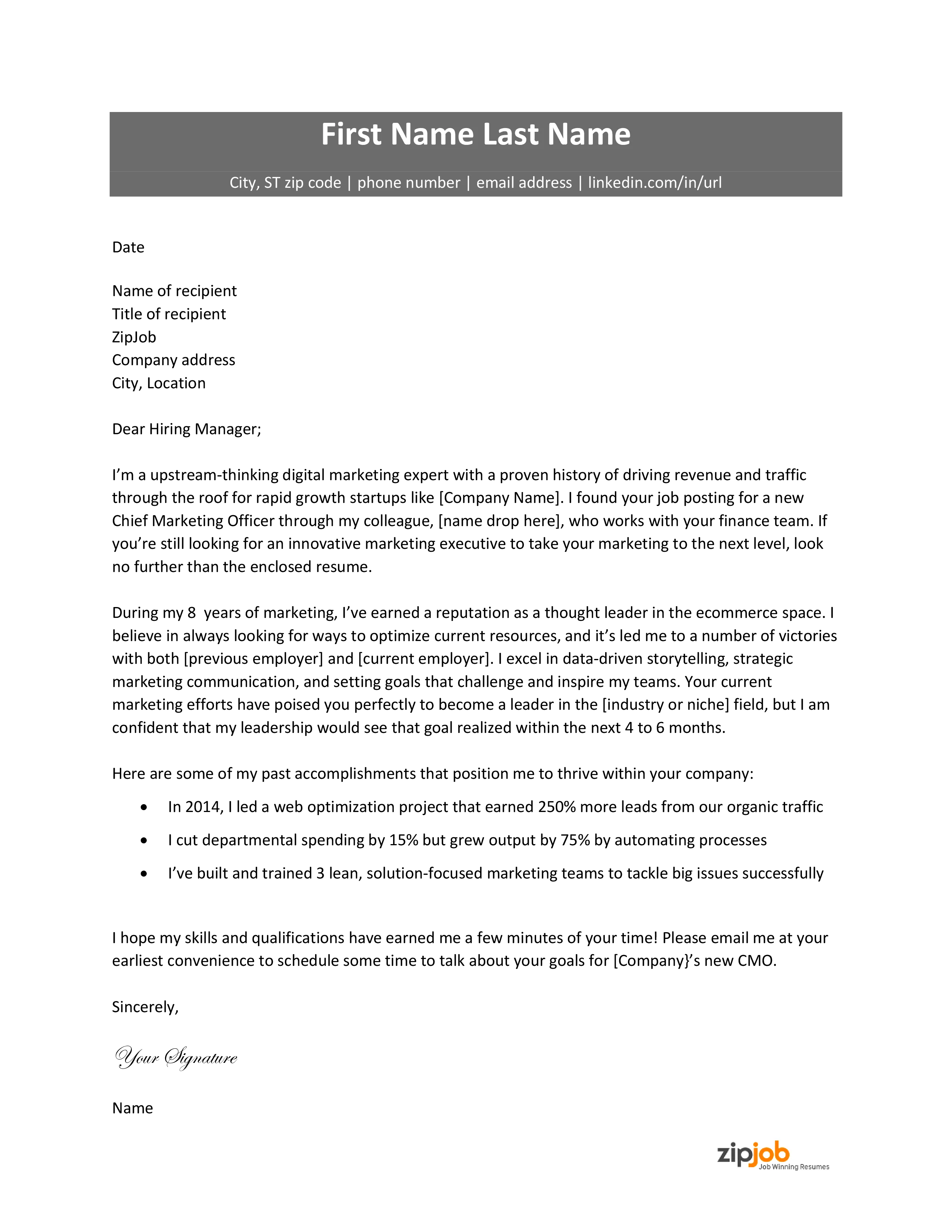
Creating a strong executive cover letter involves including key components that resonate with hiring managers and demonstrate your suitability for the role. These components should work together to paint a clear picture of your skills, experience, and potential contributions to the organization. Each element plays a critical role in making your cover letter stand out. From the way you provide your contact information to the closing call to action, every part of the letter contributes to your professional narrative and increases your chances of success in the application process. Pay attention to how you present your information and make sure it aligns with the job description and company culture.
Contact Information
Begin your cover letter with your contact information, which should include your full name, phone number, email address, and optionally, your LinkedIn profile URL. This information should be easily accessible and prominently displayed at the top of the letter. Ensure that your email address is professional, and your phone number is up-to-date. By providing complete and accurate contact details, you make it easy for employers to reach you, which is crucial for scheduling interviews and communicating about the application process. Also, it is good practice to use the same contact information as on your resume for consistency.
Opening Statement
Your opening statement is your first opportunity to grab the reader’s attention. Start with a concise and compelling introduction that immediately highlights your interest in the position and your value proposition. Clearly state the position you are applying for and how you learned about it. Then, quickly summarize your key strengths and achievements that align with the job requirements. This initial paragraph should quickly establish your qualifications and create a positive first impression. Avoid generic openings and instead, tailor your opening to the specific job and company.
Highlighting Achievements
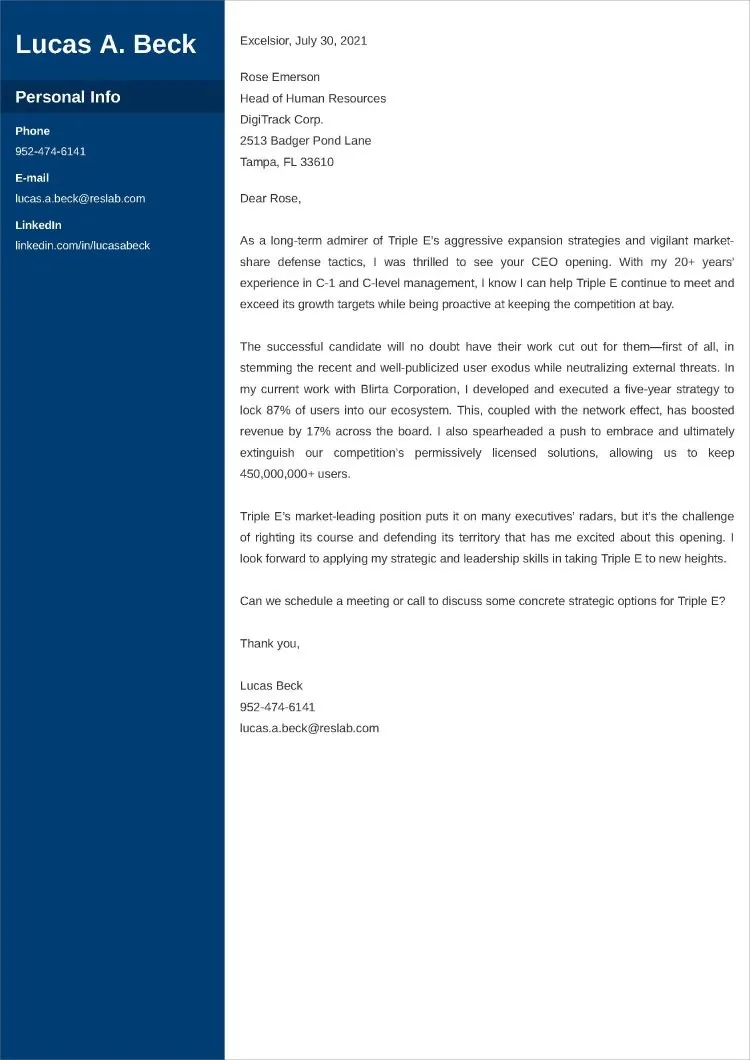
Instead of listing your job duties, focus on showcasing your significant achievements and the impact you made in your previous roles. Quantify your accomplishments whenever possible using data and metrics to demonstrate the tangible results you achieved. Mention specific projects, initiatives, or strategies you spearheaded and the positive outcomes they produced. Emphasize how your accomplishments align with the needs of the company and the specific requirements of the role you are applying for. For each achievement, provide context and briefly explain the strategies used to achieve the outcome.
Quantifiable Results
Use numbers and data to demonstrate the impact of your actions. Quantify your achievements by providing specific figures and metrics to illustrate the results you achieved. For instance, instead of saying “Improved sales,” state “Increased sales by 20% within one year.” Use percentages, dollar amounts, and other measurable results to give hiring managers a clear understanding of your capabilities and the value you can bring to their organization. This allows potential employers to see the direct impact of your contributions and provides concrete evidence of your success.
Leadership and Management Experience
Highlight your leadership and management skills by detailing your experience in leading teams, managing projects, and making strategic decisions. Provide examples of how you have motivated teams, fostered a positive work environment, and achieved organizational goals. If applicable, mention any experience in strategic planning, financial management, or business development. Tailor your description to match the expectations of the role and company culture. This will help the hiring manager understand your experience and if you have the skills to manage the tasks.
Tailoring to the Job
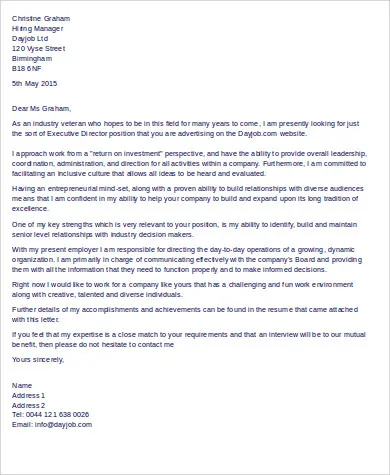
It is essential to customize each cover letter to the specific job and company. Carefully review the job description and identify the key requirements and keywords. Then, tailor your letter to address those requirements directly, highlighting your relevant experience and skills. Show that you understand the company’s mission, values, and current challenges. Research the company thoroughly and demonstrate how your skills and experience align with their objectives. This tailored approach shows that you are genuinely interested in the position and have the qualifications necessary to succeed.
Call to Action
Conclude your cover letter with a clear call to action. Express your interest in an interview and reiterate your enthusiasm for the opportunity. Thank the hiring manager for their time and consideration. Provide your contact information again and let them know you are available for a meeting. This step helps to push your application forward and increases the chances of getting a response.
Formatting and Design
The formatting and design of your executive cover letter are just as important as the content. Choose a professional and easy-to-read format, and ensure your letter is visually appealing. A well-formatted cover letter is easier to read and shows attention to detail, making a positive impression on the hiring manager.
Font and Readability
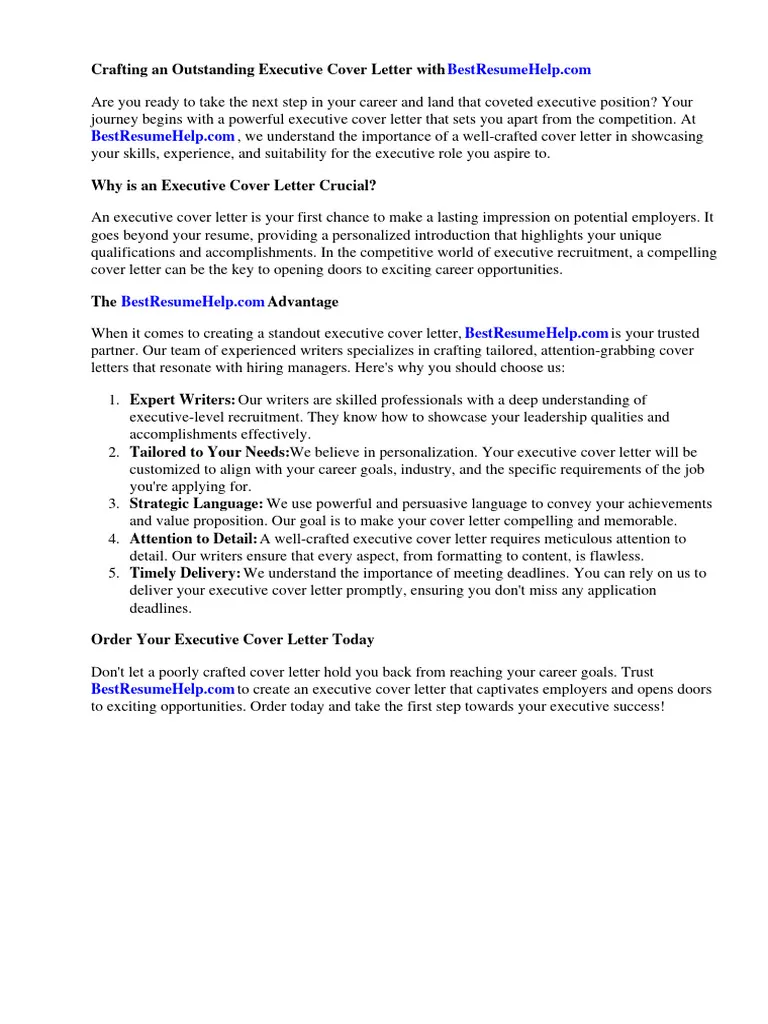
Select a clear and professional font, such as Arial, Calibri, or Times New Roman, and use a font size between 11 and 12 points. Ensure that your letter has ample white space and that the text is well-spaced. Use headings and bullet points to organize your information and make it easy to scan. Avoid using overly fancy fonts or designs, which can distract from the content. Maintaining consistent formatting throughout the letter will improve readability.
Professional Tone
Use a professional tone throughout your executive cover letter. Maintain a formal and respectful tone, avoiding overly casual language or slang. Be confident, but avoid sounding arrogant or boastful. Proofread your letter carefully to ensure that your writing style aligns with professional standards and company values. Your language reflects your professionalism and suitability for the role.
Proofreading and Editing
Always proofread and edit your executive cover letter before submitting it. Check for any grammatical errors, typos, or formatting inconsistencies. Have someone else review your letter to catch any mistakes you might have missed. A well-proofread cover letter demonstrates attention to detail and professionalism. The absence of errors enhances your credibility and increases the impact of your letter.
Common Mistakes to Avoid
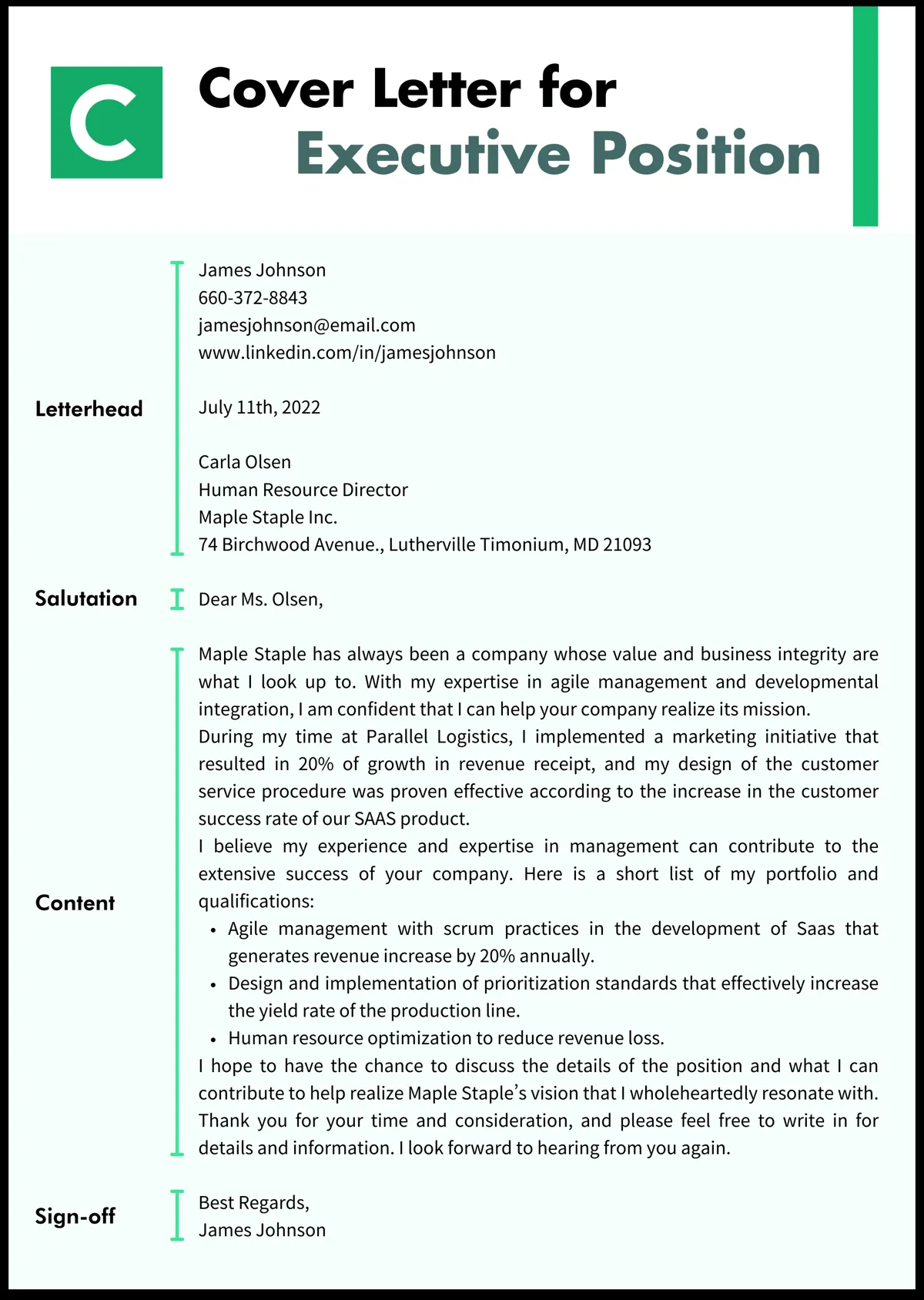
To maximize the effectiveness of your executive cover letter, avoid common mistakes that can detract from your application. By being aware of these potential pitfalls, you can ensure that your letter makes a strong and positive impression on hiring managers.
Generic Content
Avoid using a generic cover letter that can be used for any job. Customize your letter to each specific role and company. Generic content shows a lack of interest and can make your application easily overlooked. Tailor the content to match the job description and highlight your skills and experience that align with the employer’s needs.
Typos and Grammatical Errors
Typos and grammatical errors can damage your credibility and make you appear unprofessional. Proofread your letter carefully and have someone else review it to catch any mistakes. Errors can create a negative impression and make the hiring manager question your attention to detail.
Ignoring the Job Description
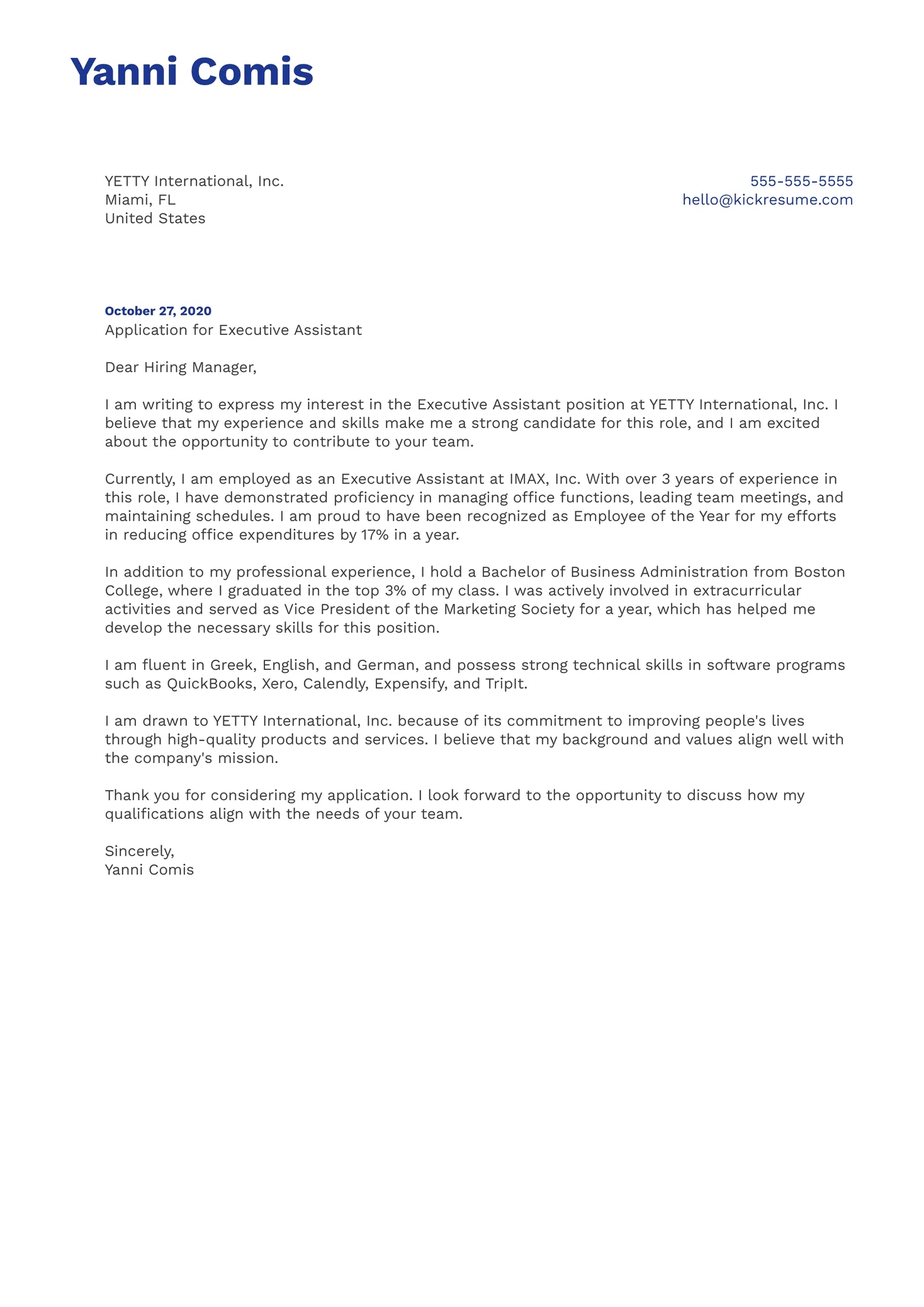
Failing to address the requirements listed in the job description is another critical mistake. Review the job description and highlight the skills and experience that directly match the employer’s needs. Address the specific requirements, keywords, and expectations mentioned in the job posting. Failing to do so might make it difficult for the hiring manager to understand your suitability for the role.
Examples of Successful Executive Cover Letters
Studying successful executive cover letter examples can provide valuable insights into how to create a compelling letter. Analyzing these examples can provide inspiration, help you understand the components of a great cover letter, and give you a template to follow. Here are a few different types of cover letter examples you can look at for guidance.
Executive Cover Letter Example 1
In this example, the candidate immediately highlights their most significant achievement and demonstrates their understanding of the company’s needs. The letter provides a strong overview of their leadership style and strategic approach. They use quantifiable results to showcase their successes. The tone is confident but not arrogant, and the letter demonstrates a clear understanding of the target job description.
Executive Cover Letter Example 2
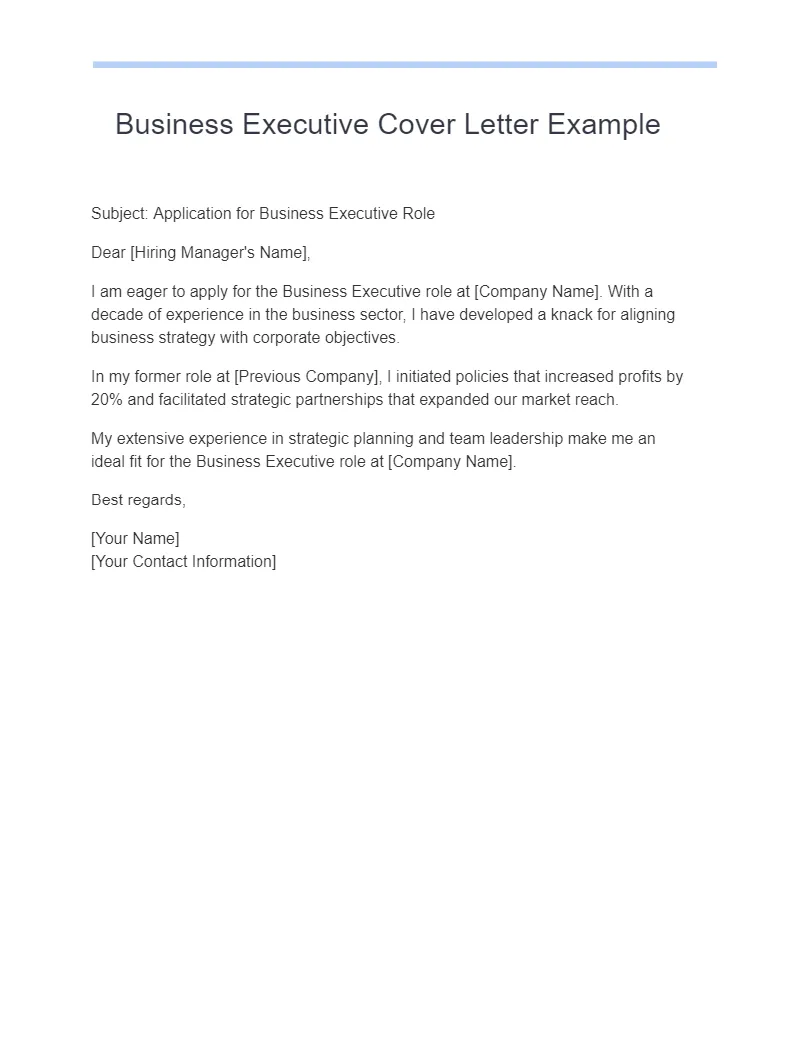
This example emphasizes the candidate’s ability to drive revenue growth. It highlights specific initiatives and the positive outcomes they produced. The candidate shows a clear understanding of the company’s financial goals. The letter clearly demonstrates experience and showcases how their skills can be leveraged. The structure is clear, with concise, action-oriented statements that emphasize the candidate’s ability to add value.
Executive Cover Letter Example 3
Here, the candidate focuses on their experience in transforming organizational culture. They demonstrate a commitment to strategic change management and improving company performance. The candidate provides several examples of past projects and how they contributed to the company. The tone is professional and results-oriented. The letter reflects a proven ability to lead and inspire teams to achieve company goals.
